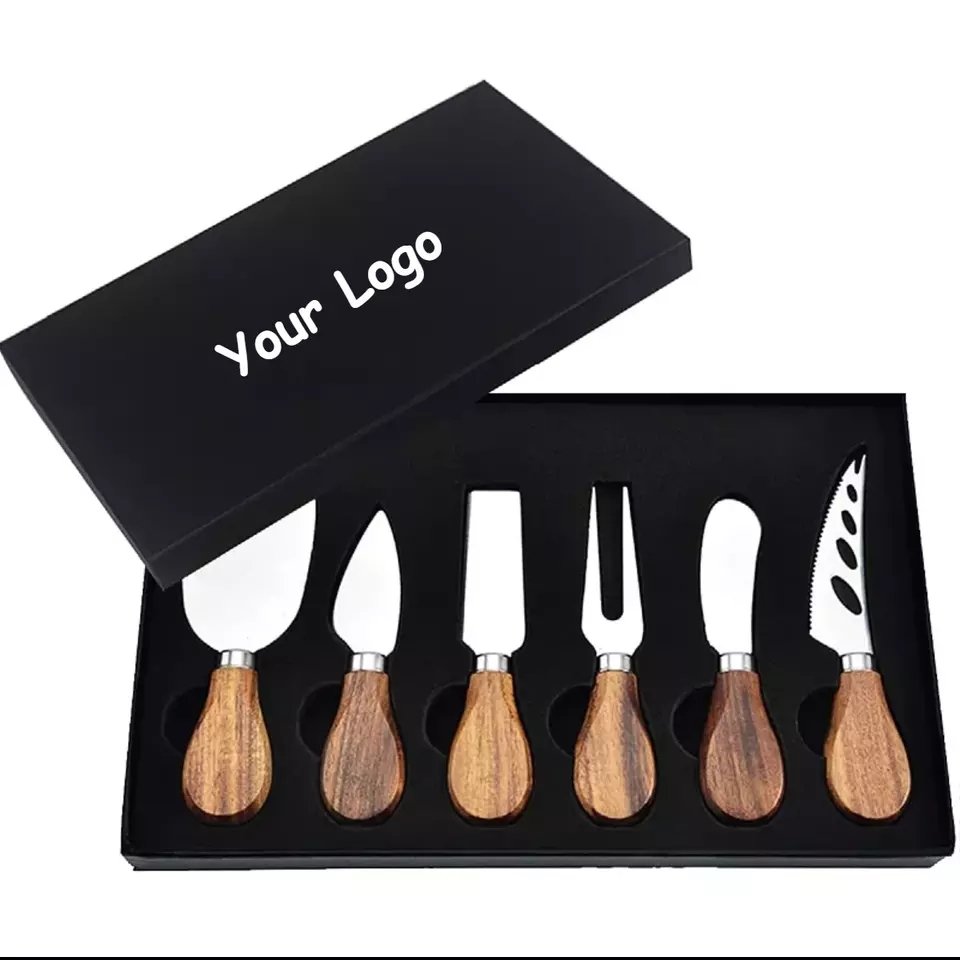The recent surge in U.S. tariffs on Chinese imports has sent shockwaves through the global cutlery market, leaving buyers and suppliers scrambling to adapt.
U.S. tariffs on Chinese stainless steel cutlery have dramatically increased, with rates reaching up to 145% in April 2025, significantly impacting global pricing and supply chains.
The escalating trade tensions between the U.S. and China have introduced unprecedented challenges for the stainless steel cutlery industry. As tariffs soar, stakeholders must navigate a complex landscape to maintain profitability and supply chain stability.
Table of Contents
Why have U.S. tariffs on Chinese stainless steel cutlery increased?
The U.S. government’s decision to hike tariffs on Chinese imports stems from ongoing trade disputes and concerns over economic imbalances.
In April 2025, the U.S. imposed tariffs up to 145% on Chinese imports, including stainless steel cutlery, aiming to address trade deficits and alleged unfair practices.
Historical Context
📉 Rising Tariffs on Chinese Stainless Steel Cutlery (U.S. Market)
| Year | Tariff Rate on Chinese Cutlery (U.S. Import) |
|---|---|
| 2023 | 25% |
| 2024 | 54% |
| 2025 | 145% (projected/implemented) |
The rapid escalation reflects a strategic move by the U.S. to pressure China into trade concessions. However, this approach has led to increased costs for American consumers and businesses relying on Chinese cutlery.
Economic Implications
📉 Key Impacts of Rising Tariffs on Stainless Steel Cutlery
| Impact Area | Description |
|---|---|
| 🛒 Consumer Prices | Higher tariffs lead to increased retail prices in the U.S. cutlery market. |
| 🚢 Supply Chain Disruptions | Importers struggle to source affordable stock, risking product shortages. |
| 📉 Market Volatility | Uncertainty in trade policy creates instability, reducing investment confidence. |
What trade policies are shaping global cutlery prices today?
Global cutlery prices are influenced by a combination of tariffs, trade agreements, and geopolitical tensions.
Current trade policies, including heightened tariffs and retaliatory measures, are driving up global cutlery prices and reshaping supply chains.
U.S.-China Trade War
The ongoing trade conflict between the U.S. and China has led to reciprocal tariffs, affecting the cost and availability of stainless steel cutlery.
Anti-Dumping Measures
Countries implement anti-dumping duties to protect domestic industries from foreign competitors selling below market value, influencing global pricing dynamics.
Regional Trade Agreements
Agreements like the Regional Comprehensive Economic Partnership (RCEP) and the Comprehensive and Progressive Agreement for Trans-Pacific Partnership (CPTPP) affect trade flows and tariffs among member countries, impacting cutlery prices.
🌐 Trade Policies & Their Impact on Stainless Steel Cutlery Prices
| Policy / Agreement | Impact on Cutlery Prices |
|---|---|
| 🇺🇸 U.S.–China Tariffs | 📈 Increase due to higher import costs for Chinese-origin cutlery |
| ⚖️ Anti-Dumping Duties | 📊 Variable impact — may stabilize or raise prices depending on enforcement and country |
| 🌏 RCEP / CPTPP | 📉 Potential decrease as member countries benefit from tariff reductions |
How do anti-dumping duties affect Chinese cutlery manufacturers?
Anti-dumping duties are imposed when a country believes foreign manufacturers are selling products below fair market value, harming domestic industries.
Chinese cutlery manufacturers face increased costs and reduced competitiveness in markets imposing anti-dumping duties, leading to potential declines in export volumes.
Financial Strain
💸 Financial Impact of Trade Duties on Chinese Cutlery Exports
| Issue | Description |
|---|---|
| 📈 Increased Costs | Duties raise the landed price of Chinese cutlery in global markets, reducing price competitiveness. |
| 📉 Profit Margins | Lower sales and the need to absorb partial costs can lead to thinner margins for both exporters and distributors. |
Market Diversification
To mitigate the impact, Chinese manufacturers may seek new markets or focus on domestic sales, requiring strategic adjustments and potential investments in marketing and distribution channels.
Innovation and Quality Improvement
Facing external pressures, manufacturers might invest in product innovation and quality enhancements to differentiate their offerings and justify higher prices.
How can buyers reduce import costs amid trade tensions?
Navigating the complexities of international trade requires strategic planning and adaptability.
Buyers can mitigate import costs by diversifying suppliers, leveraging trade agreements, and optimizing logistics to navigate the challenges posed by trade tensions.
Supplier Diversification
| Strategy | Description |
|---|---|
| 🌍 Alternative Sources | Identify suppliers in non-tariff countries (e.g., Vietnam, India) to reduce landed costs. |
| 🏭 Domestic Production | Explore local or regional manufacturing for long-term control over pricing and logistics. |
Trade Agreements
Leveraging existing trade agreements can provide access to lower tariff rates and more favorable terms.
Logistics Optimization
| Strategy | Description |
|---|---|
| 📦 Consolidated Shipping | Combine multiple orders into one shipment to reduce per-unit freight costs. |
| 🗺️ Efficient Routing | Choose optimized shipping lanes and ports to minimize delays and overall expenses. |
🧭 Strategic Options to Mitigate Tariff Impact
| Strategy | Potential Benefit |
|---|---|
| 🌍 Supplier Diversification | Reduces dependency on high-tariff regions, spreads sourcing risk |
| 🤝 Leveraging Trade Agreements | Access to preferential tariff rates via RCEP, CPTPP, FTA zones |
| 🚚 Logistics Optimization | Lowers overall landed cost through smarter shipping and consolidation |
Are Chinese suppliers still cost-effective under current tariffs?
Despite increased tariffs, Chinese suppliers may still offer competitive advantages due to their manufacturing capabilities and economies of scale.
While tariffs have raised costs, Chinese suppliers remain cost-effective for many buyers, offering quality products and efficient production processes.
Production Efficiency
Chinese manufacturers often benefit from advanced production technologies and skilled labor, contributing to lower production costs.
Supply Chain Integration
Established supply chains and infrastructure in China facilitate efficient production and distribution, offsetting some tariff-related cost increases.
Comparative Analysis
🌏 China vs. Alternative Suppliers: Key Comparison for Stainless Steel Cutlery
| Factor | 🇨🇳 Chinese Suppliers | 🌍 Alternatives (e.g., India, Vietnam) |
|---|---|---|
| 💰 Production Cost | Lower due to economies of scale | Generally higher, especially for small-volume orders |
| ✅ Quality | High and stable, mature QC systems | Variable, depends on factory maturity |
| ⏱️ Lead Time | Short, efficient and scalable logistics | Often longer, especially for custom projects |
| 📈 Tariff Impact | High (e.g., 145% to U.S. in 2025) | Lower or zero under favorable trade agreements |

Why is sourcing cutlery from China still the smart choice?
China’s robust manufacturing sector and comprehensive supply chains make it a strategic choice for sourcing cutlery.
Despite trade challenges, China’s manufacturing expertise, scalability, and infrastructure continue to make it a smart sourcing option for cutlery.
Manufacturing Expertise
China’s long-standing experience in cutlery production ensures high-quality products and innovation.
Economies of Scale
Large-scale production capabilities allow for competitive pricing and the ability to meet substantial order volumes.
Supply Chain Resilience
Integrated supply chains in China provide reliability and flexibility, crucial during global disruptions.
🇨🇳 Key Advantages of Chinese Stainless Steel Cutlery Suppliers
| Advantage | Description |
|---|---|
| 🧠 Expertise | Decades of manufacturing experience, skilled workforce, and adoption of advanced technology (e.g., laser polishing, PVD coating) |
| 🏭 Scale | High-capacity factories capable of handling bulk and urgent orders efficiently, even with customization needs |
| 🚚 Resilience | Strong industrial infrastructure, port systems, and domestic logistics ensure reliable delivery and quick issue response |
How to structure your cutlery supply chain to avoid trade policy shocks?
Building a resilient supply chain involves proactive planning and diversification to withstand policy changes.
To mitigate trade policy risks, businesses should diversify suppliers, invest in local partnerships, and stay informed on policy developments.
Diversification
🔄 Risk Mitigation Strategies for Cutlery Sourcing
| Strategy | Description |
|---|---|
| 🌐 Multiple Suppliers | Build partnerships across several countries or regions to avoid over-reliance on a single source. |
| 🧪 Alternative Materials | Use different raw materials (e.g., 13/0, 430, composite steel) to enable flexibility in supply and pricing. |
Local Partnerships
Collaborating with local distributors or manufacturers can offer stability and reduce exposure to international trade fluctuations.
Policy Monitoring
Staying informed on trade policies enables timely adjustments to sourcing strategies and contracts.
| Strategy | Benefit |
|---|---|
| Diversification | Reduced risk from regional disruptions |
| Local Partnerships | Enhanced stability and responsiveness |
| Policy Monitoring | Proactive adaptation to new regulations |
Practical Steps to Future-Proof Your Cutlery Supply Chain
1. Evaluate Risk Across All Tiers
Most buyers only consider their direct suppliers. But in reality, risks often come from lower-tier vendors—such as steel mills, packaging producers, or mold suppliers. Build a visibility map to track potential exposure throughout the supply chain.
2. Adopt Dual-Sourcing Models
If you rely 100% on one factory or country, any disruption—be it tariffs, logistics, or politics—could pause your business. Instead, dual-sourcing splits orders between Chinese suppliers and other countries like Vietnam, India, or even Turkey. This doesn’t mean abandoning Chinese suppliers—it means balancing risk.
3. Localize When Feasible
For bulk buyers or importers with warehousing capabilities, setting up regional fulfillment centers or light assembly operations can reduce landed costs and sidestep some duties.
4. Use Incoterms Wisely
Negotiating FOB (Free on Board) versus CIF (Cost, Insurance, Freight) impacts not only logistics but also who takes responsibility for cost changes. Understanding the difference and using the right term based on tariff sensitivity can improve cost control.
5. Engage with Trade and Legal Experts
Complex policies often change faster than businesses can react. Partnering with trade consultants or legal experts in customs can help you anticipate changes, file exemptions, or even appeal duty rates.
| Action Point | Description |
|---|---|
| Supply Chain Mapping | Understand and document all tier-1 to tier-3 suppliers |
| Risk Rating | Evaluate each node’s exposure to tariffs and disruptions |
| Backup Suppliers | Set up pre-qualified alternative factories in lower-risk countries |
| Inventory Buffering | Keep safety stock or increase warehouse capacity to reduce short-term shocks |
| Contract Revisions | Include clauses for tariff adjustments and supply interruptions |
The stainless steel cutlery business is entering a new phase of uncertainty. With the recent 2025 Trump administration tariff hike—raising duties to 145% on Chinese stainless steel products—many global buyers are under pressure. But as a Chinese supplier who has worked with over 1000 brands worldwide, I’ve seen this kind of policy turbulence before.
The truth is, our strength isn’t just in low cost—it’s in flexibility, innovation, and scale.
I’ve had Turkish clients who initially panicked at the 2024 round of tariffs. They tried sourcing from Eastern Europe and Vietnam. But after just one reorder cycle, they came back. Why? Because while the invoice may look cheaper, the delays, quality rejections, and production bottlenecks added far more invisible costs.
What I want readers—especially wholesale buyers—to understand is this:
Yes, tariffs hurt. Yes, trade friction is real. But reacting with fear often costs more than staying steady and strategic.
My advice is:
– Keep sourcing from China, but structure your contracts smartly.
– Use design innovation and packaging upgrades to move upmarket—absorbing tariff cost through higher perceived value.
– Explore bonded warehouses, duty deferral, or re-routing through lower tariff countries if your volume justifies it.
– And most importantly, talk to your supplier—not just about price, but about risk sharing and co-developing a flexible long-term plan.
I run a factory. But I don’t sell just metal—I help you solve problems.





